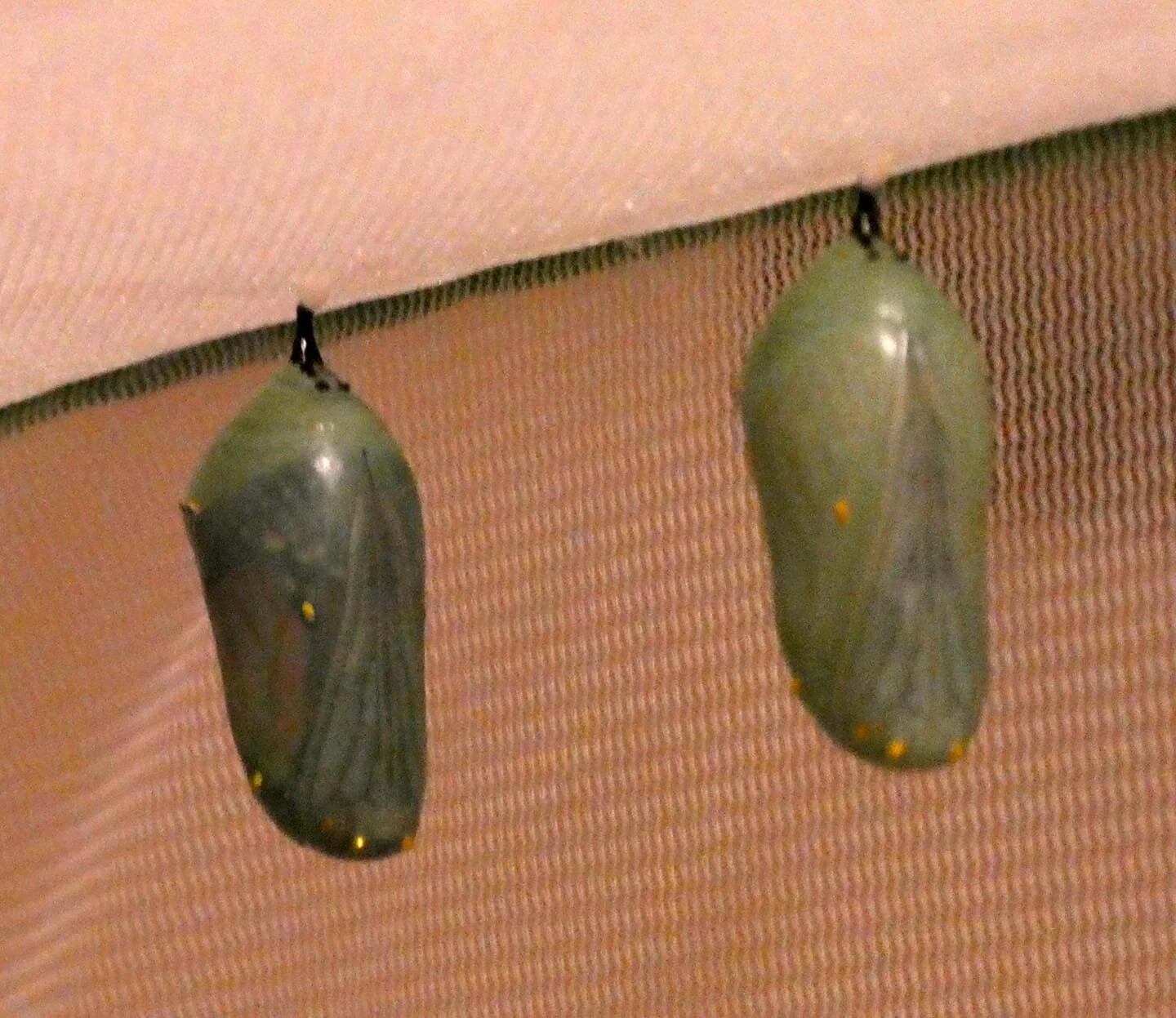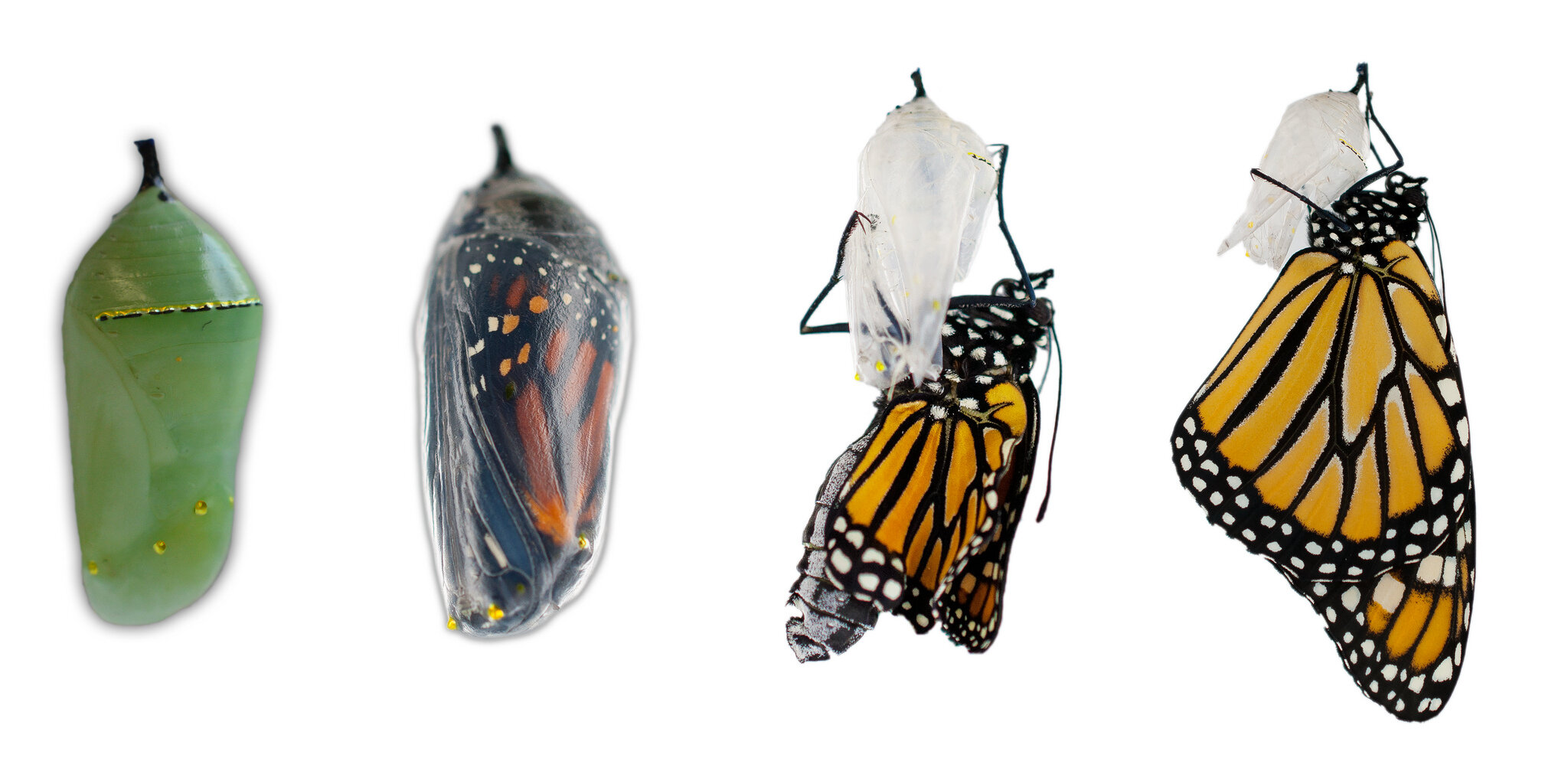Raising Monarch Butterflies Indoors
Over the past few years, I’ve introduced more flowering plants that attract pollinators to the garden. Introducing pollinators to your garden is not only beneficial for your plants, but it supports what has become a fragile ecosystem for endangered species of both bees and butterflies. Monarch butterflies, which are fairly common visitors to my garden, will only lay their eggs on milkweed (the only plant monarch caterpillars eat), so their habitats are limited. I have about 4-5 milkweed plants, along with other nectar-rich plants in my garden to provide an attractive habitat for them. Monarch butterflies have become an iconic symbol of North America and a symbol of life, regeneration, and hope. Unfortunately, monarch populations are in decline, and it’s one of the reasons many have started raising monarchs indoors.
Monarch Development and Migration
Monarch butterflies are one of the few of their kind that make a two-way migration like birds do. There are eastern and western migrations. According to biologicaldiversity.org, “Overall, eastern monarchs have declined by more than 80% over the past two decades.” Western monarchs, who migrate to parts of southern California, have experienced an even greater decline of about 99.9%. Loss of habitat, climate change, and pesticides have all contributed to their decline. According to the U.S. Forest Service:
Unlike other butterflies that can overwinter as larvae, pupae, or even as adults in some species, monarchs cannot survive the cold winters of northern climates. Using environmental cues, the monarchs know when it is time to travel south for the winter. Monarchs use a combination of air currents and thermals to travel long distances. Some fly as far as 3,000 miles to reach their winter home.
Monarchs experience four generations each year. This means that butterflies return to the northern U.S. after migrating south and lay eggs for the first generation in spring. They then become butterflies that lay eggs for the next generation, and so on. The fourth generation is the one that lives longer and migrates south.
As monarch caterpillars grow, they molt and go through five instar stages before becoming butterflies. An instar stage is a period between molting (when they shed their exoskeleton as they grow).
Four instars and a chrysalis. Photo credit: saveourmonarchs.org
They don’t always make it through their full lifecycle to become butterflies. Whether it’s environmental conditions or birds that use them as a snack, life can be uncertain for them. Last year, I became even more interested in monarch butterflies when I took a handful of monarch caterpillars (in their 5th instar stage) inside from my garden to raise them indoors and release them. I had fourth-generation monarchs. Their journey was important and I was on a mission.
“My” caterpillars the day I brought them inside.
Raising Monarchs Indoors
When I saw four healthy-looking monarch caterpillars in my garden at the beginning of September last year, I just had to try to save them. I borrowed a butterfly enclosure from a friend, joined Facebook groups to learn more from people who did this regularly, and nurtured the caterpillars to become healthy butterflies ready for their migratory path. It was an amazing experience.
The monarch enclosure where I raised the caterpillars.
Watching their development was filled with constant worry and entertainment. I made sure they had an abundance of milkweed to feast on, kept the stems in small cups of water so the leaves wouldn’t dry out, and covered the tops of the cups securely so they weren’t at risk for falling in. (You can also purchase units designed to keep things in place like this.) They seem to eat non-stop. They do not need added water, as they get what they need from the milkweed. I made sure they were by a window and that the room was warm enough. They could sense when I was nearby too — they would become completely still, stopping in mid-crunch of a leaf until I left - a defense mechanism, no doubt. I tried to leave them alone as much as possible while making sure they were OK. When they were ready to pupate, they marched up to the top of the enclosure, spun silk to attach themselves to the top, and hung from the top in a “J” shape.
Caterpillars in a J formation.
They stayed in their “J” for about 24 hours and then they did an insane dance to shed their exoskeleton to form a chrysalis, which is a beautiful jade and gold formation. (The video below shows the process, but is sped up significantly. The process actually took about 25 minutes.) About 14-15 days later, each chrysalis turned very dark in color - almost black, and then got clear over the course of a couple of days until they emerged as their beautiful butterfly selves in a process called eclosing. This happens VERY fast. I missed a couple of them eclosing because I took a quick shower. When they first released themselves, they were small and crumpled and spent time airing out to get to their full size.
It is recommended to wait at least 24 hours after they eclose, but not longer than two days to release them. This allows them to get stronger before releasing them. It’s also recommended that they be released in the morning on a warm sunny day. If you need to keep them longer than that because of bad weather, they need to be fed. (For feeding tips, see monarchwatch.org.) I allowed them about two days to dry out and get in good shape before releasing them. They needed to be strong to prepare for their journey to Mexico.
The chrysalis starts to become more transparent. They emerged about 2 days after this photo was taken.
One monarch “hatched” while another remained in chrysalis.
Monarch emergence. Photo Credit: Becky Hansis O’Neill
The duration of time between taking them inside and releasing them was a little over 3 weeks (24 days). Keep in mind that I took them in during their fifth instar stage. Taking caterpillars inside during earlier stages, or starting with a chrysalis will take longer. If you take them in earlier, you’ll see the molting process that leads them into each instar stage.
Some people order monarch rearing kits to have larvae or chrysalises delivered to raise them at home. You need to have milkweed, an enclosure, and a good environment to raise them in. They don’t require a lot of maintenance, but you do need to be prepared to care for them.
If you do decide to raise monarchs indoors, I highly recommend joining related Facebook groups for support. There are things that can go wrong during the process and you’ll need to have a group of people you can ask questions of, and know what to do when things don’t go as planned.
Monarchs after drying out a bit.
When I released them, I put fruit and flowers near the enclosure (butterfly brunch!) and tried to let them take their time coming out of the enclosure. Some flew out quickly and others took longer. I even shared the butterfly release experience with the neighborhood kids, which made it even more special. I think this was a welcome distraction from the remote learning “screen time” they had all been suddenly thrust into because of the COVID-19 pandemic.
If you want to encourage monarchs to inhabit and lay eggs in your garden to advance the population, plant native milkweed and plants that provide nectar. I am an enthusiast, not an expert, but there are many great resources for you to learn more and get started.
And if you’re in a position to raise monarchs:














